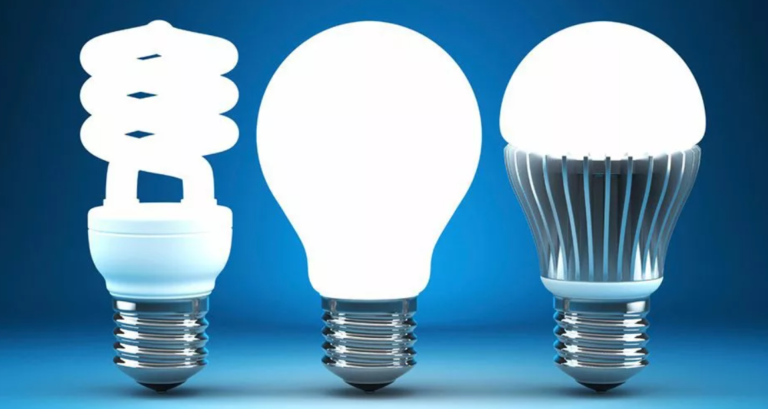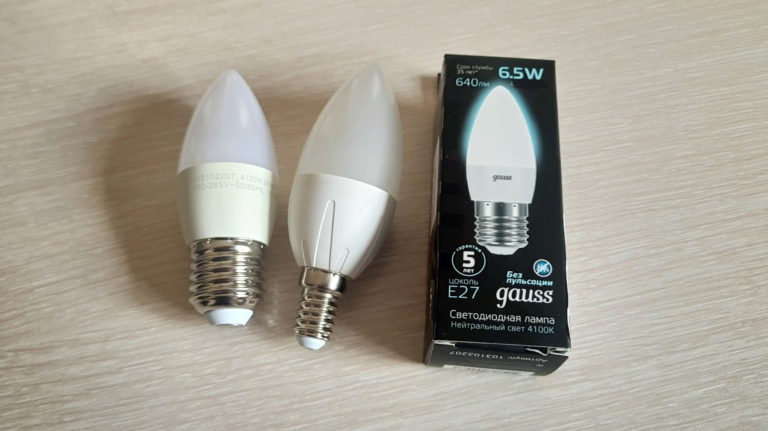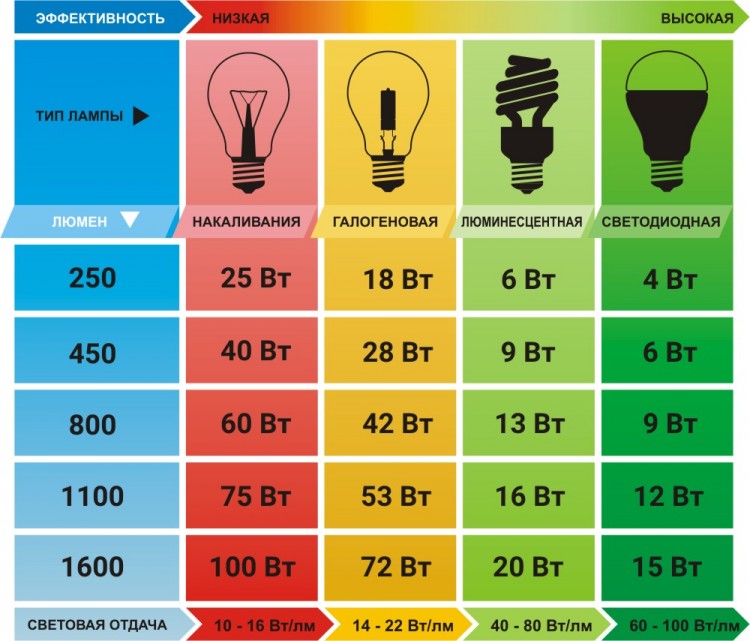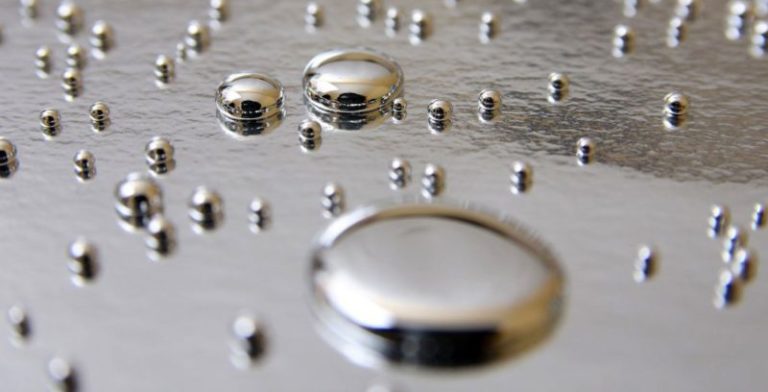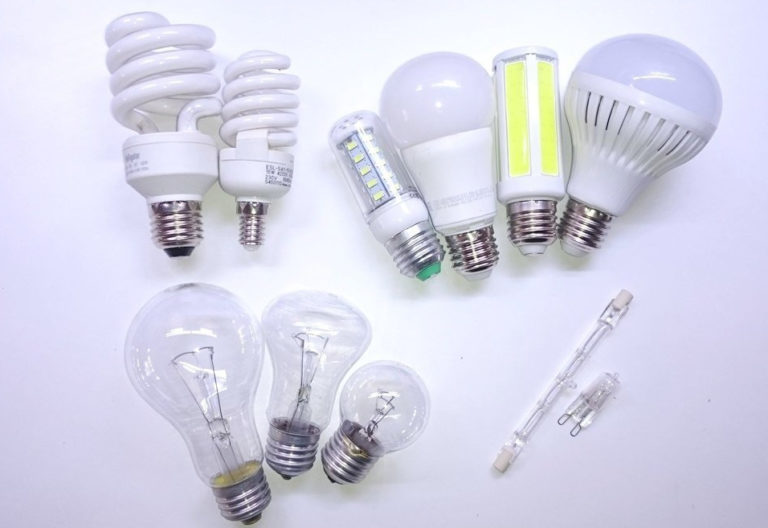Varieties of energy saving bulbs
Every owner of an apartment, house or business seeks to save as much as possible on energy consumption. One of the best options may be to replace incandescent light bulbs (ELs) with energy-saving devices. The only thing you will have to do is to choose the type of bulbs, taking into account their characteristics and purpose.
To choose from a variety of energy-saving bulbs, it is necessary to study their principle of operation, power indicators, advantages and disadvantages, as well as possible harm to health. It is better to give preference to high-quality models, as cheap analogues often do not meet the stated characteristics and quickly burn out.
What are energy saving lamps?
Energy saving lamps are light bulbs of the following varieties fluorescent lamps. They consist of a base and a bulb. Inside are tungsten electrodes coated with activating substances: strontium, calcium and barium. These lamps must not be disposed of with normal household waste. There are special collection points for this purpose.
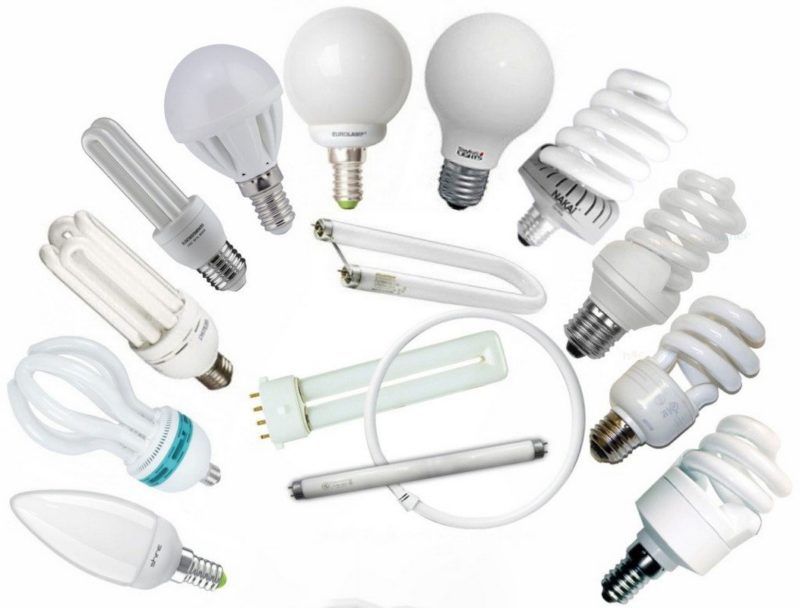
Inside the lamp is an inert gas or mercury, which turns into vapor when heated. When the lamp is switched on, a charge appears between the electrodes. The resulting radiation is in the ultraviolet range of the spectrum. To convert it into visible light, the inner surface of the bulb is coated with a phosphor.
Types of energy saving lamps
Energy-saving lamps come in several types. Each of them has its own purpose. For example, halogen ones are rarely installed in household appliances because of a number of disadvantages. For example, they are strongly heated, which does not always suit. At the same time, they have a number of advantages, and they are easy to pick up under any type of plafond.
Fluorescent
Energy-saving lamps are divided into 2 types - compact and standard (linear). Both devices have a lot in common. In both cases, the design includes a glass sealed bulb with a gas (neon or argon) inside. A small amount of mercury is also present. The electrodes are supplied by regulating apparatus.
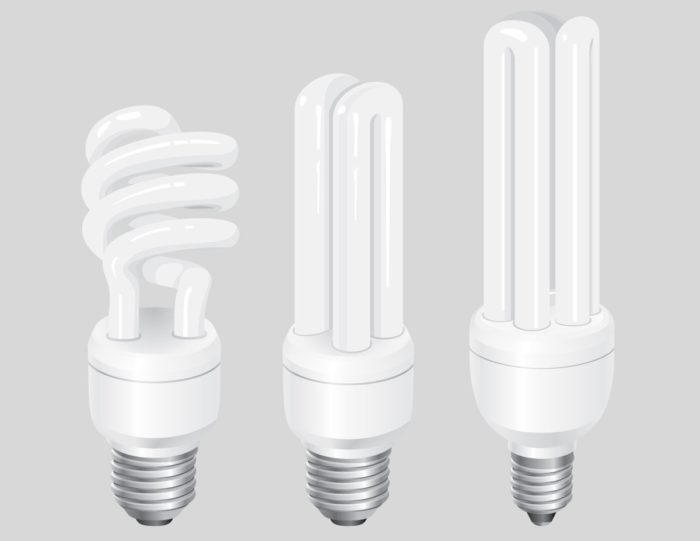
Mercury vapor mixed with gases emits ultraviolet light. To convert the UV spectrum into daylight, the bulb is treated internally with phosphor. The difference between a compact lamp and a fluorescent lamp is as follows:
- Size. U-shaped or spiral-shaped have the same function, but a more complex, twisted shape to reduce the size;
- installation. Linear counterparts are mounted as separate elements, fixing in the body of the luminaire. Compact products are installed in the base or bulb.
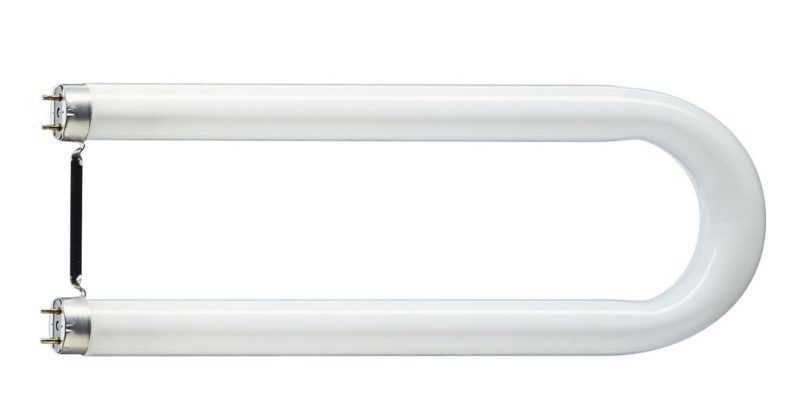
Since this type has the same functions as incandescent lamps, they can be easily installed in any fixtures (chandeliers and sconces). Linear light bulbs are called because of their shape, because their basis is a straight tube. Popularly they are called "fluorescent lamps. On sale you can find products of different shapes - twin, U-shaped and circular. They do not have a plinth. Metal rods are mounted on the tubes, which are connected to the network by terminals.
Continuous action
With this type of energy-saving bulbs buyers are least familiar. These lamps are characterized by better color renderingbut with a lower light output. The main advantage is the emission of a continuous spectrum. These models are among the safest.
Special color
These energy-saving lamps are divided into:
- ultraviolet;
- with a colored phosphor;
- with pink phosphor.
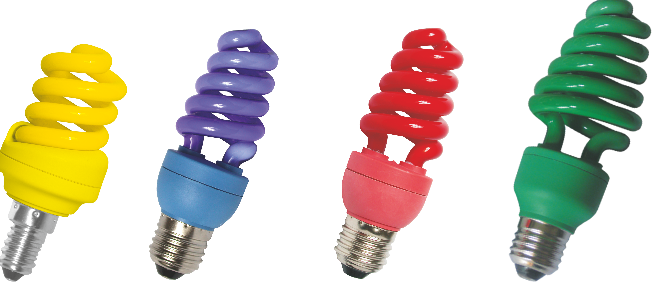
This type of bulb is not used for room lighting. Their main purpose is to create a festive atmosphere. Such lamps can be found in exhibition and concert halls, clubs, restaurants, light shows and playgrounds.
The luminous surface of this type of lamp is larger than that of other LNs. This creates a more comfortable and uniform illumination. Blue, green, yellow and red light bulbs can be found on store shelves. They work from the 220 V mains, as well as conventional ones. One of the advantages of these lamps - even turned off, they decorate the room.
LED bulbs
Because of the energy-saving properties of LED crystals, they used to be used in radio as indicators. Later technology improved, and LEDs were used as super-bright components in backlighting circuits. They have found application in almost all fields.
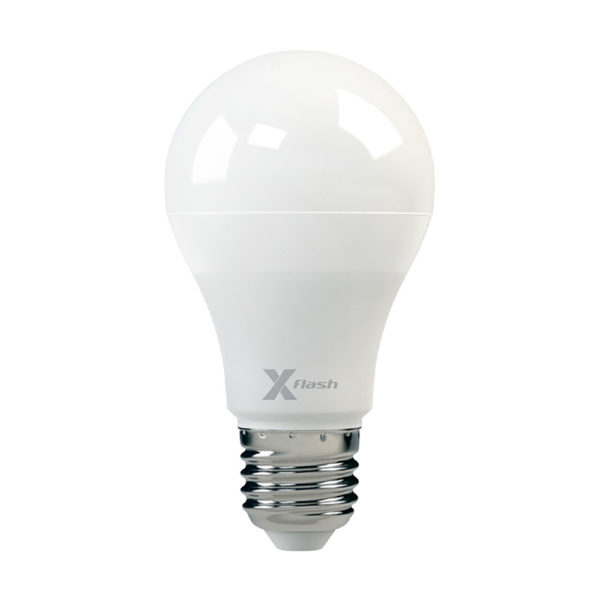
The design consists of a bulb, inside of which are goethinax, a bar, LEDs and a driver. The housing can be elongated, "corn" or spot. The risk of mechanical damage is reduced due to the polycarbonate housing.
The lamps are connected to the 220 V mains without the need for ballast. Narrow shape of diode lamps allows combining them into small and large groups. According to the places of installation are classified into:
- office and household;
- industrial;
- for installation in streetlights;
- automobile;
- phytolamps;
- for growing plants.
Linear devices are often used for lighting in landscape design. Here it's best to choose lamps with a high degree of protection - IP67 or IP65. The form can be tubular or in the form of a spotlight. If it is a room with a standard climate, IP20 is suitable.
LED bulbs are the best sellers. Of all types of lamps, they consume the least energy, do not require special disposal, do not radiate heat and last up to 100,000 hours, depending on the model. Quality devices can withstand voltage fluctuations and sudden changes in temperature. Almost the only disadvantage of these lamps is the high price.
How an energy-saving lamp works
Different types of energy-saving devices work according to different principles. If it is a fluorescent bulb, there is an inert gas with an admixture of mercury vapor inside the bulb. As mentioned above, inside the tube is covered with a phosphor. This is needed to create the color temperature and glow spectrum.
There is a voltage converter (driver) in the housing that performs the ballast function. When the voltage is applied to the lamp, the driver creates a breakdown of the gas gap between the electrodes.
The spirals are heated, which increases the emissivity of the electrodes and vaporizes the mercury. After a few seconds there is a gas discharge in the bulb. After that the driver goes into ballast mode. The voltage and current are stabilized at an optimal level. The mercury vapor emits ultraviolet light during the discharge. It is absorbed by the phosphor and begins to emit light in the visible part of the spectrum.
Area of application
Fluorescent lamps are labeled by the type of socket as follows:
- G53. Manufactured in a sealed casing and designed for rooms with high humidity. Often installed in plasterboard or stretch ceilings;
- 2D. Used in decorating, for built-in lighting in shower stalls;
- G24. Intended for installation in domestic lighting fixtures and at industrial sites;
- 2G7 and G23. Mounted in wall luminaires with special holes.
Lamps with E14, E40, E27 bases can be screwed into the sockets, replacing the light bulbs. They are large and do not fit all luminaires. The advantage that distinguishes them from other bulbs - better color rendering.
There are:
- With colored phosphors. Used for artistic illumination, advertising signs, citylights and inscriptions;
- With ultraviolet radiation. Suitable for illumination of dark zones, disinfection in hospitals, for entertainment events;
- with pink phosphor. Actively used in the meat industry to give meat in a display case a marketable appearance.
LED lamps are often used for household, industrial and street lighting. Products emit light in one direction, which makes them indispensable for creating directional flow. They are purchased for art galleries and museums, as they do not emit ultraviolet light.
Power
Power consumption of different types of lamps is different, depends on the power of the lamp and is measured in watts. Below is a comparison table:
| Lm - luminous flux. | Type of bulb and its power | |||
| LED | Incandescent | Fluorescent | Halogen | |
| 3040 | 26 | 200 | 45 | 120 |
| 2160 | 22 | 150 | 36 | 90 |
| 1700 | 18 | 120 | 24 | 72 |
| 1340 | 12 | 100 | 20 | 60 |
| 710 | 8 | 60 | 12 | 36 |
| 415 | 4 | 24 | 8 | 24 |
| 220 | 2 | 12 | 6 | 15 |
Harms of energy saving lamps
Some types of energy-saving bulbs have a disadvantage - they contain mercury vapor. Their amount is minimal and is not capable of much harm to humans. You have to break a lot of fluorescent bulbs in a small room at the same time to make the damage tangible.

Harm to humans can be avoided by proper use and correct use and proper disposal of products. LEDs are completely harmless and do not require special disposal.
How to choose lamps
When choosing, you need to consider the following:
- light temperature and color of luminescence. For office space, it is advisable to buy products with cool shades and temperature up to 6500 K. If it is a children's room, it is recommended to buy lamps with natural shades up to 4200 K;
- wattage. To determine the power of the LN is divided by 5. For example, if the LN has a power of 100 V, the energy-saving will be 20 V. But such calculations are not true for all types of devices;
- shape. The design of the room or luminaire should be taken into account;
- the service life. LED lamps are the most durable;
- warranty. The maximum warranty period is up to 3 years for LED products.
Video on the topic: Which energy-saving bulbs really help save money
Advantages and disadvantages of lamps
The pros of energy-saving bulbs include the following:
- Up to 100,000 hours of continuous operation;
- economy;
- expensive models do not lose brightness during operation;
- LED lamps practically do not heat up;
- The ability to choose any shade of light
- warranty;
- a large number of shapes.
Disadvantages:
- the presence of harmful vapors in the bulb, because of which the bulbs need to be handed over to specialized collection points;
- high price;
- with frequent switching on and off the service life is reduced;
- brightness after turning on increases gradually.

Conclusion
When choosing an energy-saving bulb, you should consider a number of characteristics: power, color temperature, susceptibility to damage, installation features. Each type has its own disadvantages and advantages, which plays a key role in choosing a bulb.

